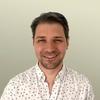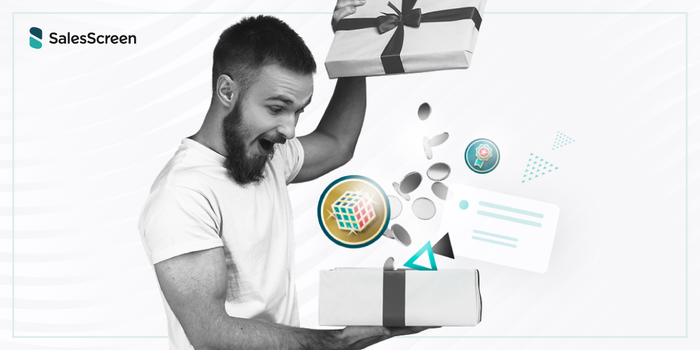By now, you have likely heard of gamification as it applies to business objectives - it’s possible you’ve even looked into adding a gamification platform to your tech stack(since you are on our blog and all 😉).
It’s also possible that you aren’t entirely sure what gamification is and how it works. The quick definition is that gamification is adding game-like elements to non-gaming environments to improve engagement and performance. But not all gamification is created equal; by combining good game mechanics with clearly defined and measurable tasks - awareness, productivity, and motivation are increased. You know what else increases? Revenue.
Let’s walk through how your team can benefit through gamification and how you can start applying some of these simple and easy gamification principles today.
1. Ramp Up the Competition
Everyone likes to compete, right? You run a little faster if someone is next to you on the treadmill. Likewise, if someone is closing more deals, you’re likely to up your game and start calling more customers in order to close more deals. Why? Because humans are wired for competition.
For example:
In a survey of faculty, students, and staff at the Harvard School of Public Health, nearly half of the respondents said they’d prefer to live in a world where the average salary was $25,000 and they earned $50,000 than one where they earned $100,000 but the average was $200,000.
Competition is an innate part of who we are as human beings. From a biological and historical perspective, we’ve competed since the beginning for everything from food and resources to the Olympic games. We are hardwired to compete.
However, keep in mind that small team sizes are more effective when competing. According to the Association for Psychological Science, When there are few competitors, people can experience social comparison, which fuels motivation to compete. But as the number of competitors increases, social comparison diminishes, dampening competitive feelings.
Researchers found that while one’s competitive motivation increases in a small group, it decreases significantly when a few competitors become many.
The takeaway? Run more varied competitions with smaller groups rather than fewer but larger competitions.
2. Make Work Meaningful
Work is more than just a 9-to-5, it is where we spend most of our time and is often times integral to healthy self-confidence. A well-designed gamification plan inspires employees to take action because they are rewarded in ways that are meaningful and make them feel valued. This can come in a variety of ways, such as peer or manager recognition, praise, increased autonomy in their role, and, of course, real-life prizes.
By measuring the impacts of key tasks and supporting the growth, development, and improvement of action on these key tasks, gamification is an effective strategy to drive focused activity while also providing meaingful value to individual employees.
3. Speed Up Time to Mastery
Mastery is comprehensive knowledge or skill at something, allowing us to complete large tasks in shorter timeframes with higher levels of quality. In order to achieve mastery, we need to repeat tasks many times over… but repetition is boring and tedious. So, how can you make it so that attaining mastery becomes simple, interesting, and fun? Easy, reward them!
When people receive recognition, accolades, rewards, or other meaningful incentives for completing clearly defined tasks, it inspires better performance and higher motivation, which in turn results in more drive to keep learning. So, if you want employees to master specific tasks, create a competition to ensure everyone focuses on those objectives, and don't be stingy on the rewards! We suggest giving awards for multiple categories and places to make sure everyone feels like they have an opportunity to win!
4. Inspire Collaboration
Similar to competition, collaboration inspires us to put forth extra effort, just slightly differently. Whereas competition pits us against each other–individually or in teams – collaboration sets common goals for a group to achieve together. Gamification helps build a culture of teamwork and fuels continuous progress for everyone. And since it also increases transparency, people are more likely to converse about their own and others’ activities and contribute relevant knowledge whenever possible.
For example, say one of your co-workers makes a sale with an important client. You happen to have some insight about that particular client that can help with nurturing the relationship moving forward, so you head over to their desk and fill them in on what you know. Not only does this foster relationships within the office, but it also helps to prevent churn and ultimately benefits the company's bottom line.
5. Designate Goals
There is a reason why so many people set goals when they want to achieve something. It inspires motivation and holds them more accountable for the completion of tasks. However, abandoning goals is common due to a lack of clarity and specificity, leading to frustration, burnout, and ultimately abandonment.
Gamification makes goal-setting simple and targeted goals explicit, which greatly increases the likelihood of accomplishing–and surpassing–individual, team, and company goals. Specific, measurable goals with a time constraint are proven to be the most effective. With gamification tools, you can easily implement assessable targets and indicate time limits–you can also set up recurring goals, for example, weekly or monthly budgets.
6. Provide Instant Feedback
Instant feedback allows people to understand how they are performing and subsequently adapt their behavior if needed. If they are performing well, they can celebrate and continue to progress, and if they are performing poorly, they can quickly course-correct and identify patterns that could help them to improve in the future. Either way, employees have control and ownership over their performance, and this will likely result in happier and more productive workers.
Gamification is one of the most lucrative tools in any sales manager’s arsenal. It motivates your team, gives you access to real-time analytics and metrics, and helps boost your culture where it matters most. Request your free demo to see how SalesScreen could fit into your team to help you build pipeline, hit your goals, and thrive through any struggles.










